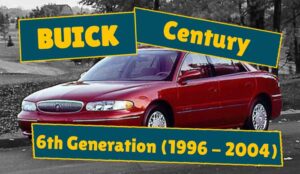Buick Century 60 (First Generation) Origin
The name Buick century was used by Buick for a line of high-end full-sized cars produced between the years 1936 through 1942, 1944 through 1958, and from 1973 through 1975 for mid-sized cars.
The first of the Buick century cars ever debuted was the series 60, which was later renamed in 1936 as a lighter and shorter model, and this time using the same engine as the bigger Roadmaster and Limited services, giving it better performance even though it was using the shorter wheelbase of the Buick Special.
Buick Century 60 (First Generation) Overview
The Buick series 60 had a 132 -inch wheelbase and was designed with an inline six-cylinder engine also shared with the series 50. It features an overhead valve with a displacement of 331.4 cubic inch displacement, mechanical valves, four main bearings, a Marvel carburetor, and delivered a power of 99 horsepower at 2800 revolutions per minute.
At the beginning of the generation, it had a full-length running board, and this denoted the top model for Buick at the time, and starting with this generation, all of General Motor cars shared the same corporate appearance as a result of the art and color section that was headed by Harley J. Earl, and modest changes were applied in subsequent years to update the appearance.
In 1931, little modifications were made, which included a reduced running board and the overhead valve to 220.7 cubic inches. This same year witnessed the introduction of the Buick straight 8 engines that developed up to 90 brake horsepower, an equivalent of sixty-seven kilowatts. On the outside appearance, it seemed as though nothing changed between the 1930 and 1931 models; this same fact also occurred in the following year as well.
In 1933, the body length of the series 60 increased, and the radiator was hidden behind a façade with a grille. The engine power increased from 90 to 97 horsepower. The year 1933, was also the year all General Motor vehicles were installed with optional vent windows, formerly known as “No Draft Individuality Controlled Ventilation” and later called “Vent planes”.
In 1934, the appearance was modified to a more rounded appearance with a new overhead-valve of 278 cubic inches, an eight-cylinder engine, and a power value of one hundred horsepower.
In 1955, most of the features were still quite the same. At the same time, the body style selections were almost similar to the larger Buicks but were more affordably priced.
Buick Century 60 (First Generation) Production
In 1999, General Motors built 38,180. The body styles available were sedan, torpedo, coupe, and roadster convertible. From 1931 to 1932, a total of fifty-five thousand, one hundred and thirty-five vehicles were produced by the company.
The total production of series 60 cars produced from nineteen thirty-three to nineteen thirty-five was thirty-one thousand, three hundred and eighty-five, and in nineteen thirty-six, the model’s name was changed to “Century”.
Buick Century 60 (First Generation) Price
In total, a variety of six choices of the Buick series 60 were available for customers to choose from, which include both a two-door and four-door convertible. The term “Phaeton” was generally used to describe the four-door convertible.
The price of the Series 60 models is considered moderately pricey at the time as they sold for one thousand, six hundred and seventy-five dollars, which, of course, is no small money in recent time as the stated value is an equivalent of roughly thirty-two thousand dollars, given the rate of inflation and other factors.
That’s all for today guys, I’m sure you loved this article, so hit that share button, and stay tuned for more classic car articles.




